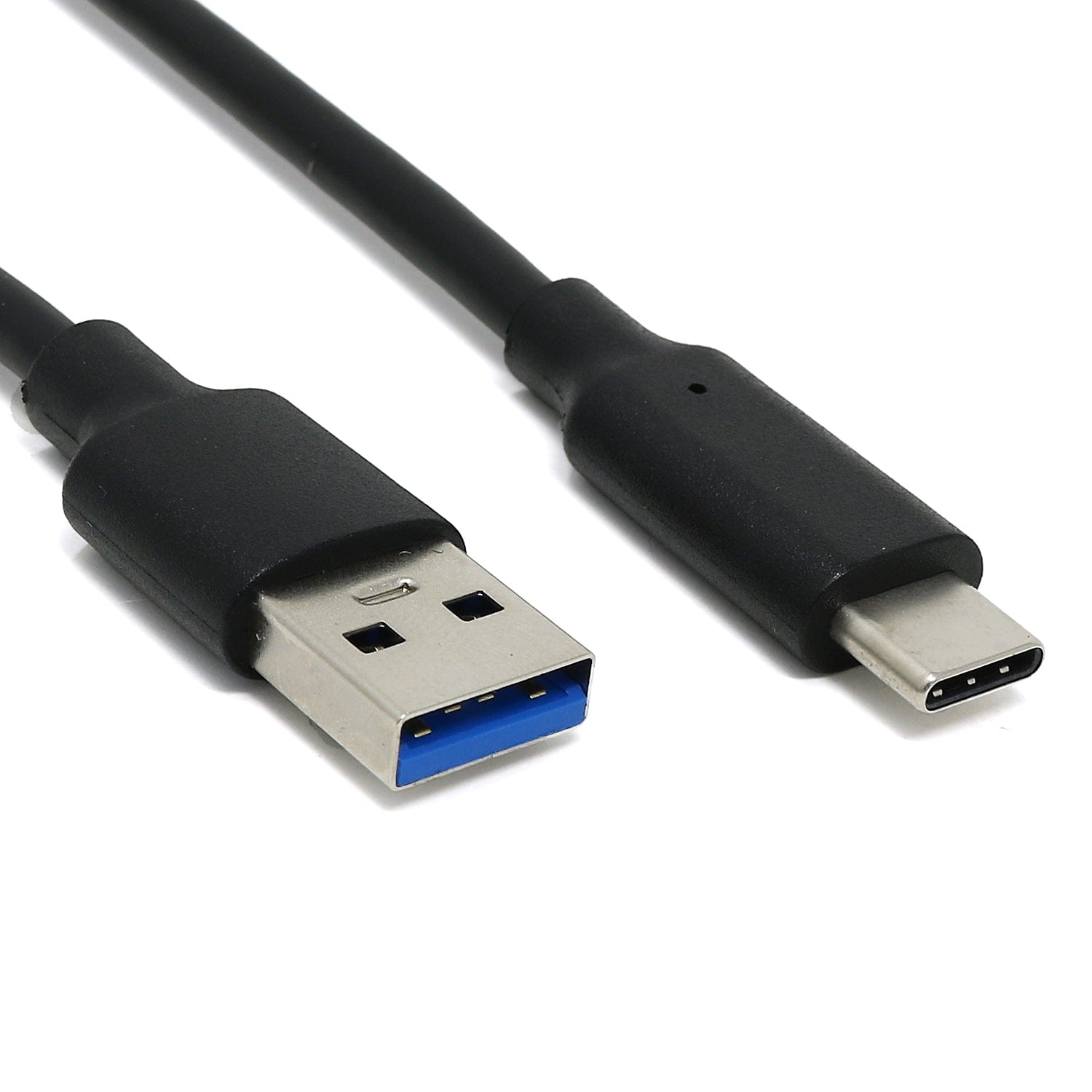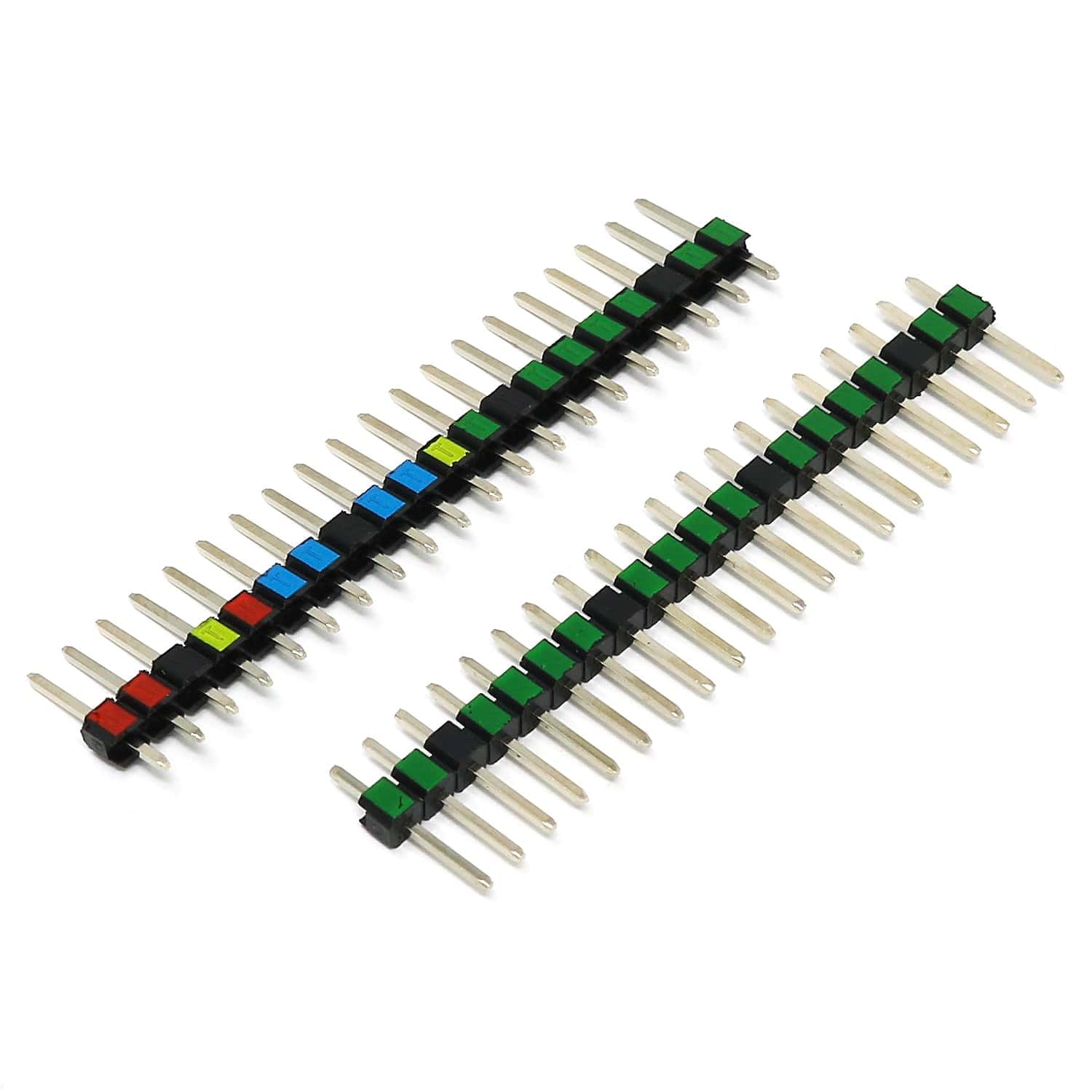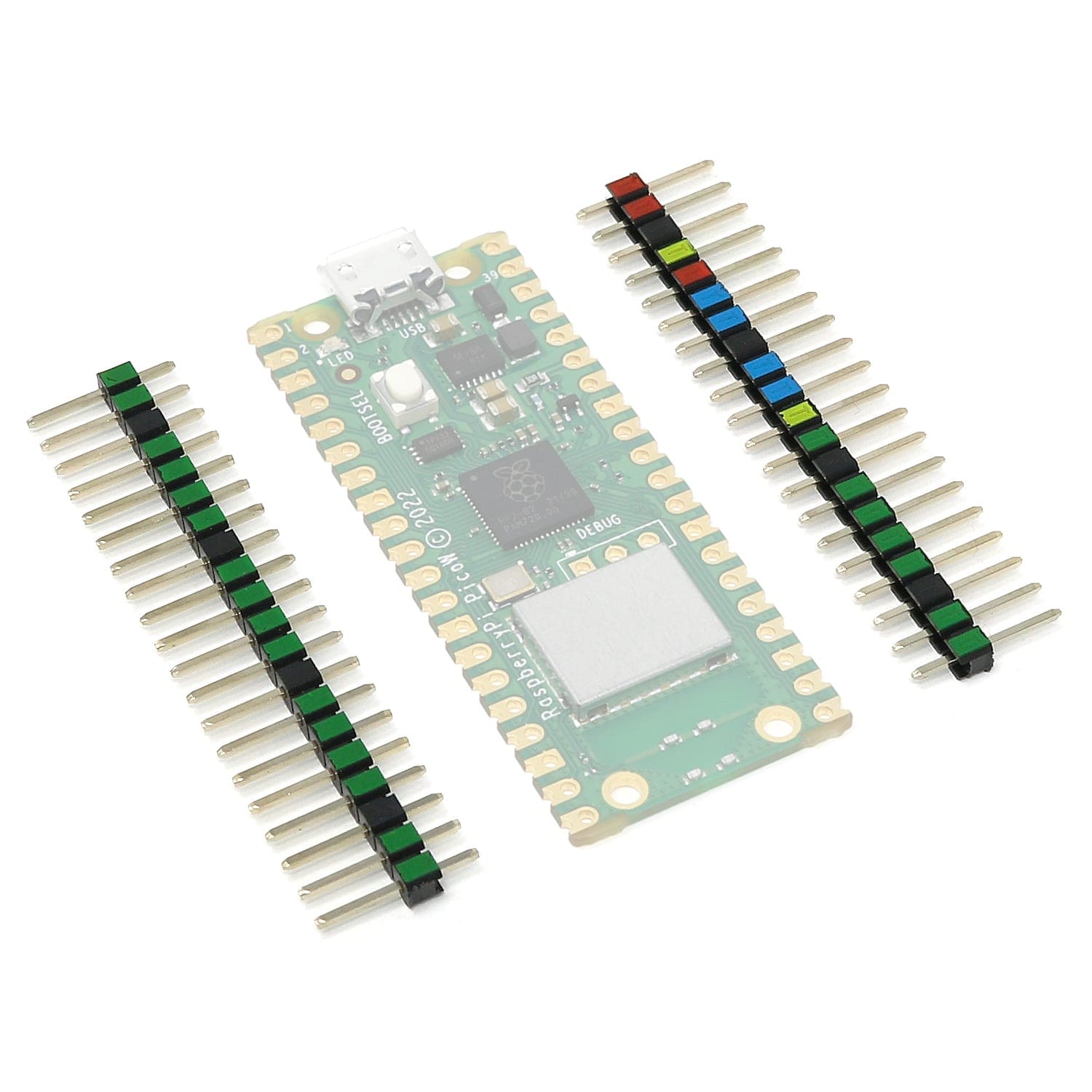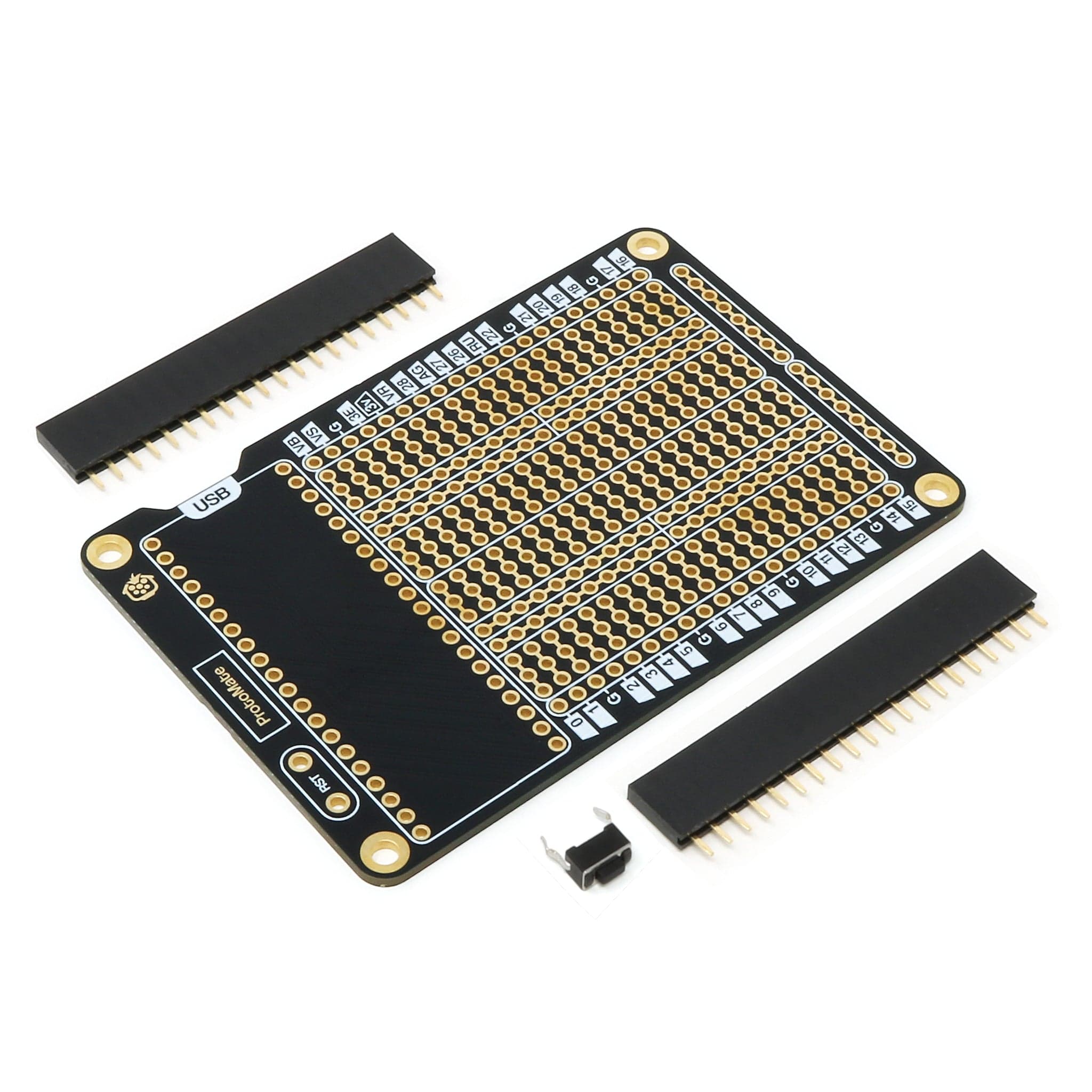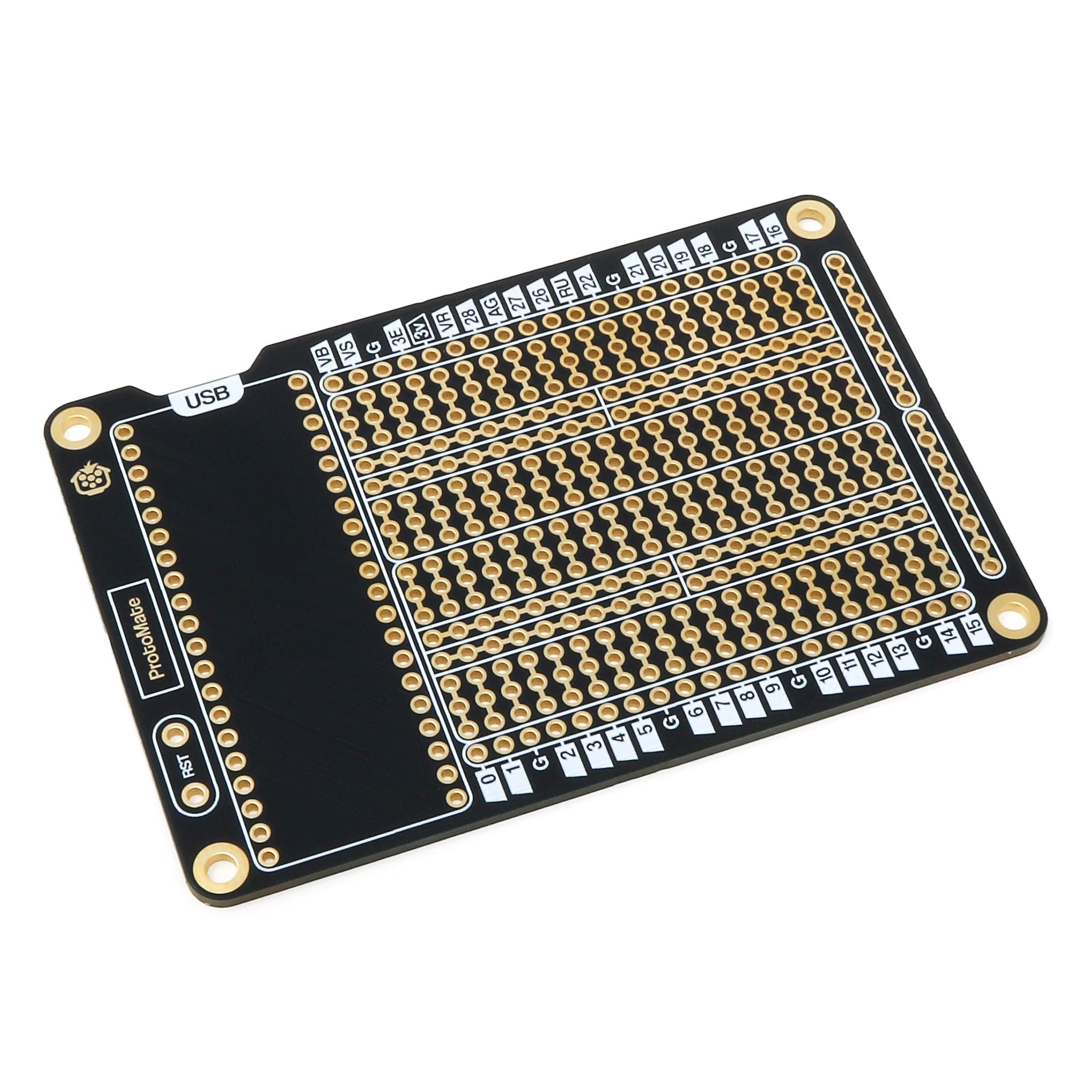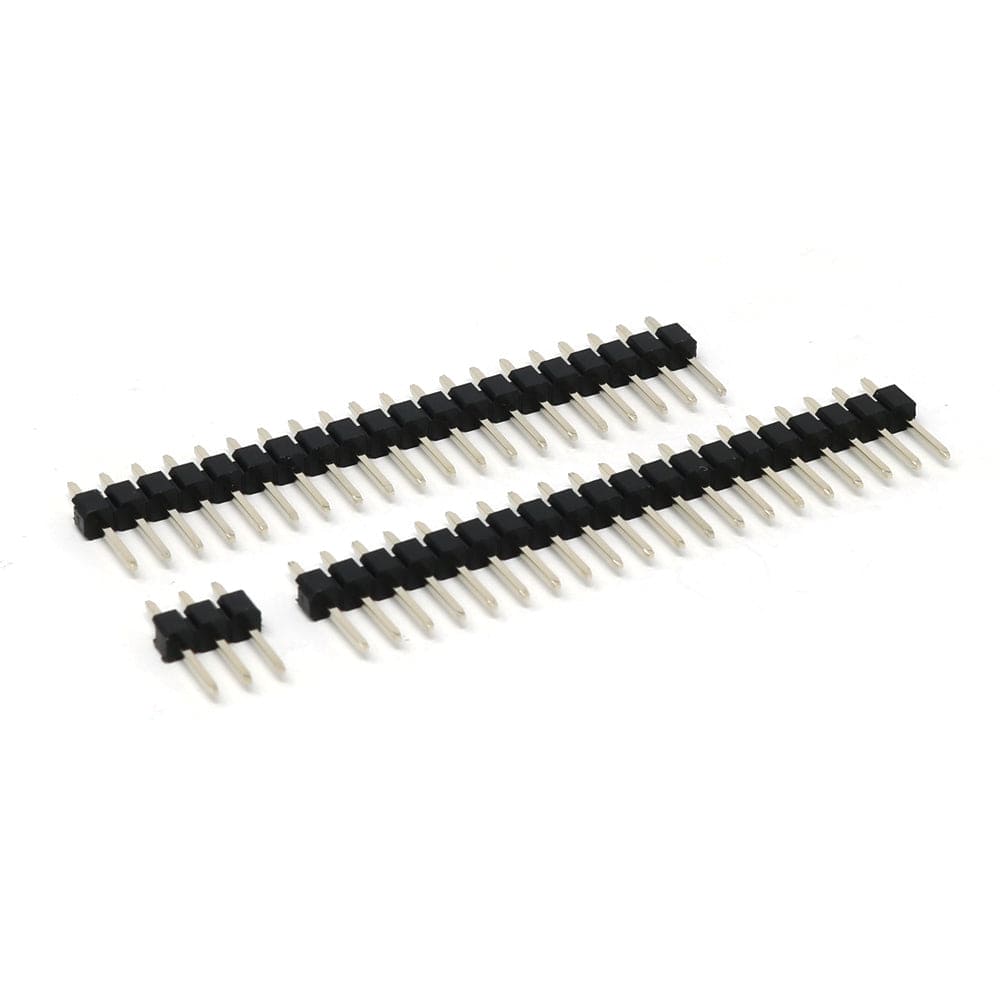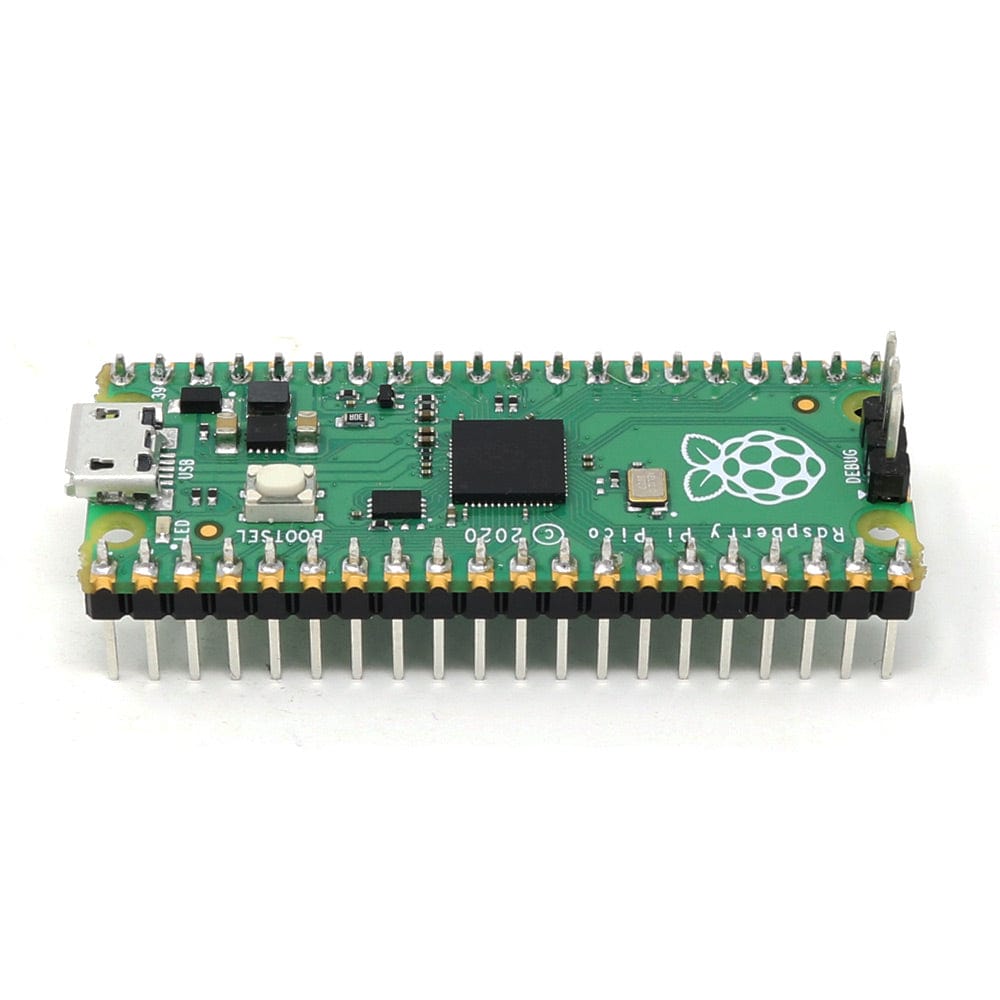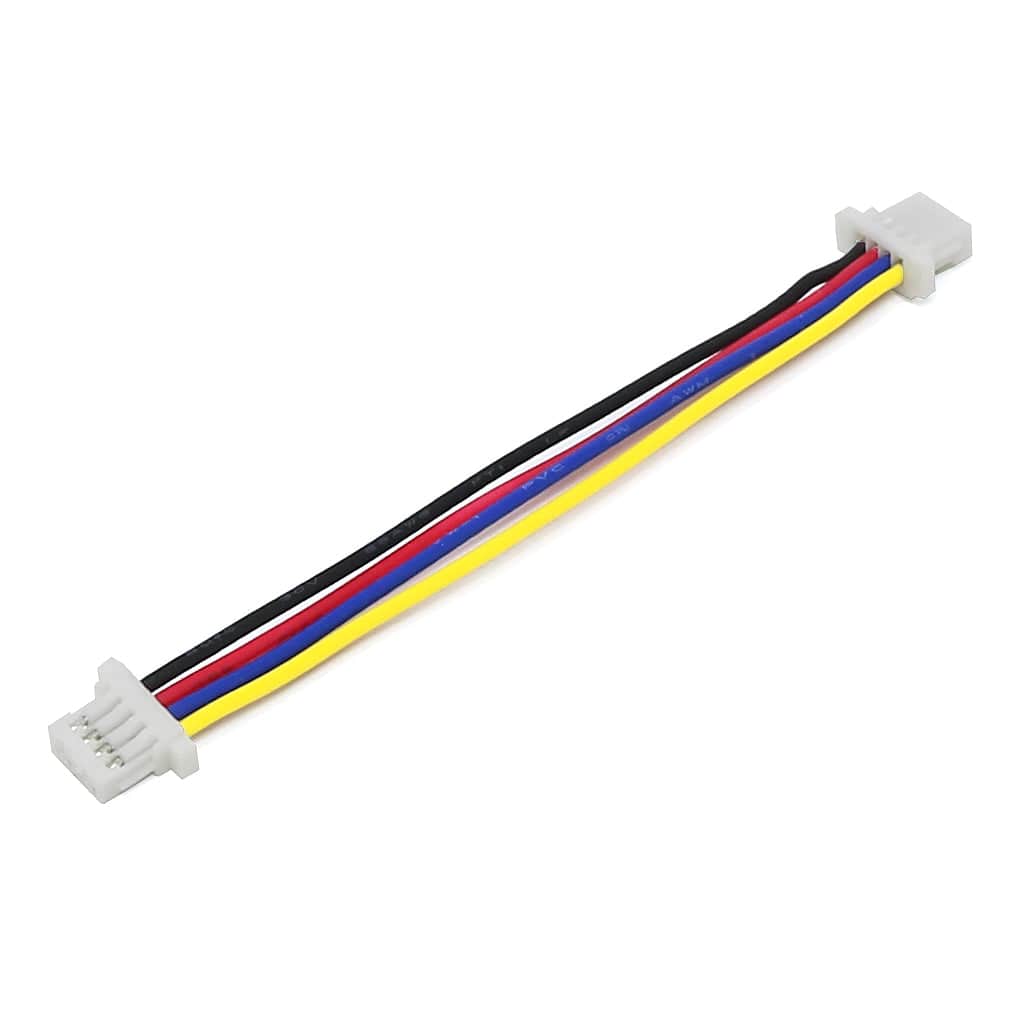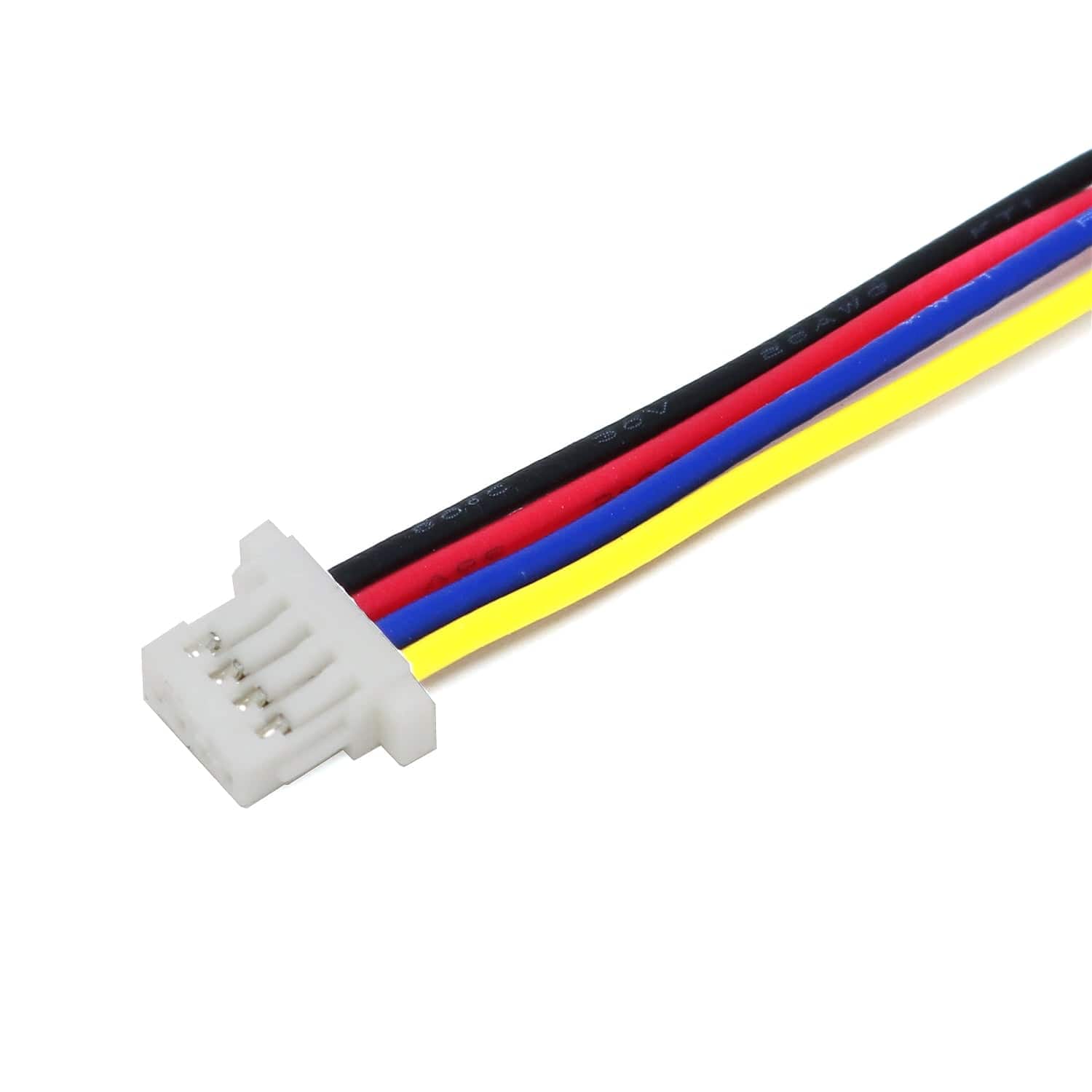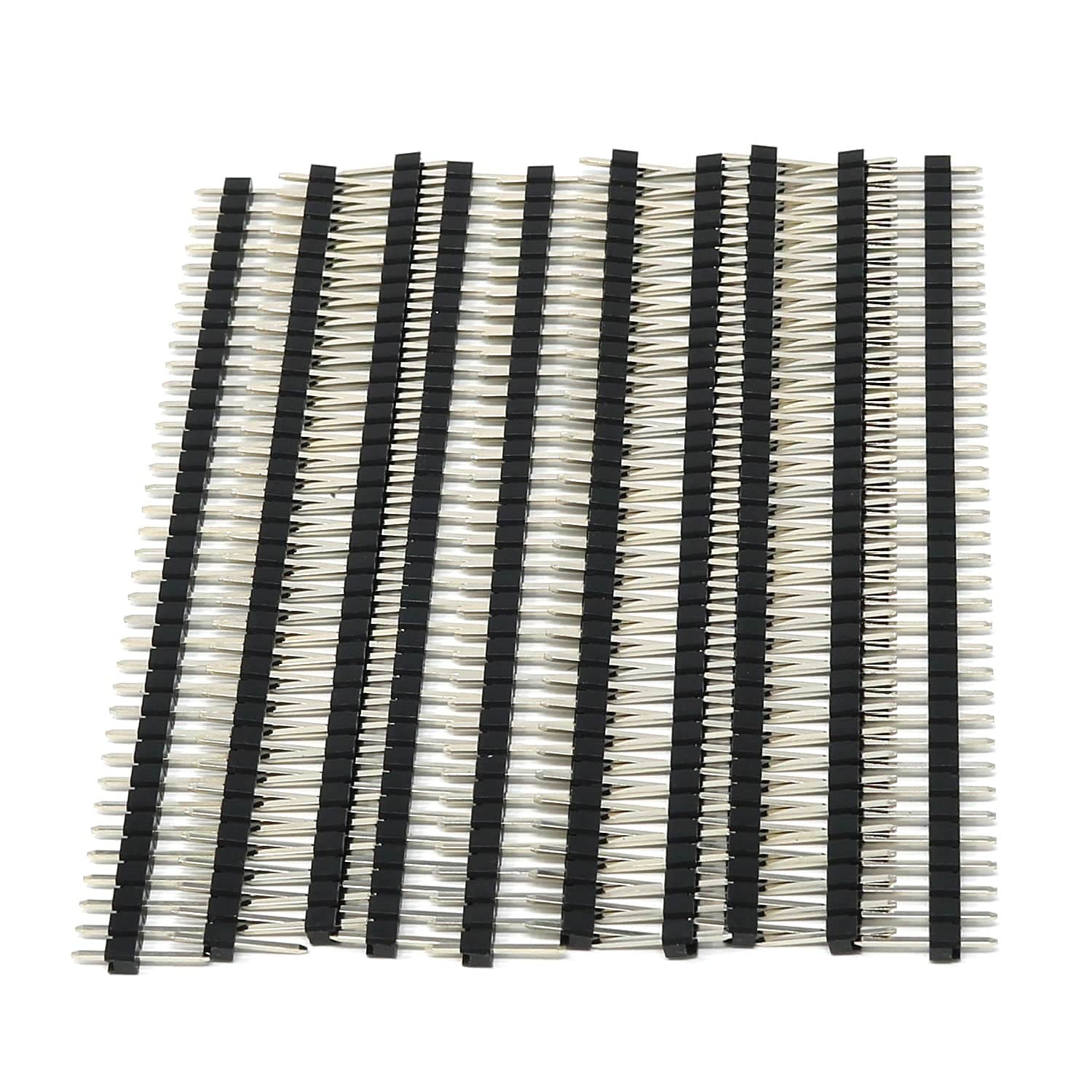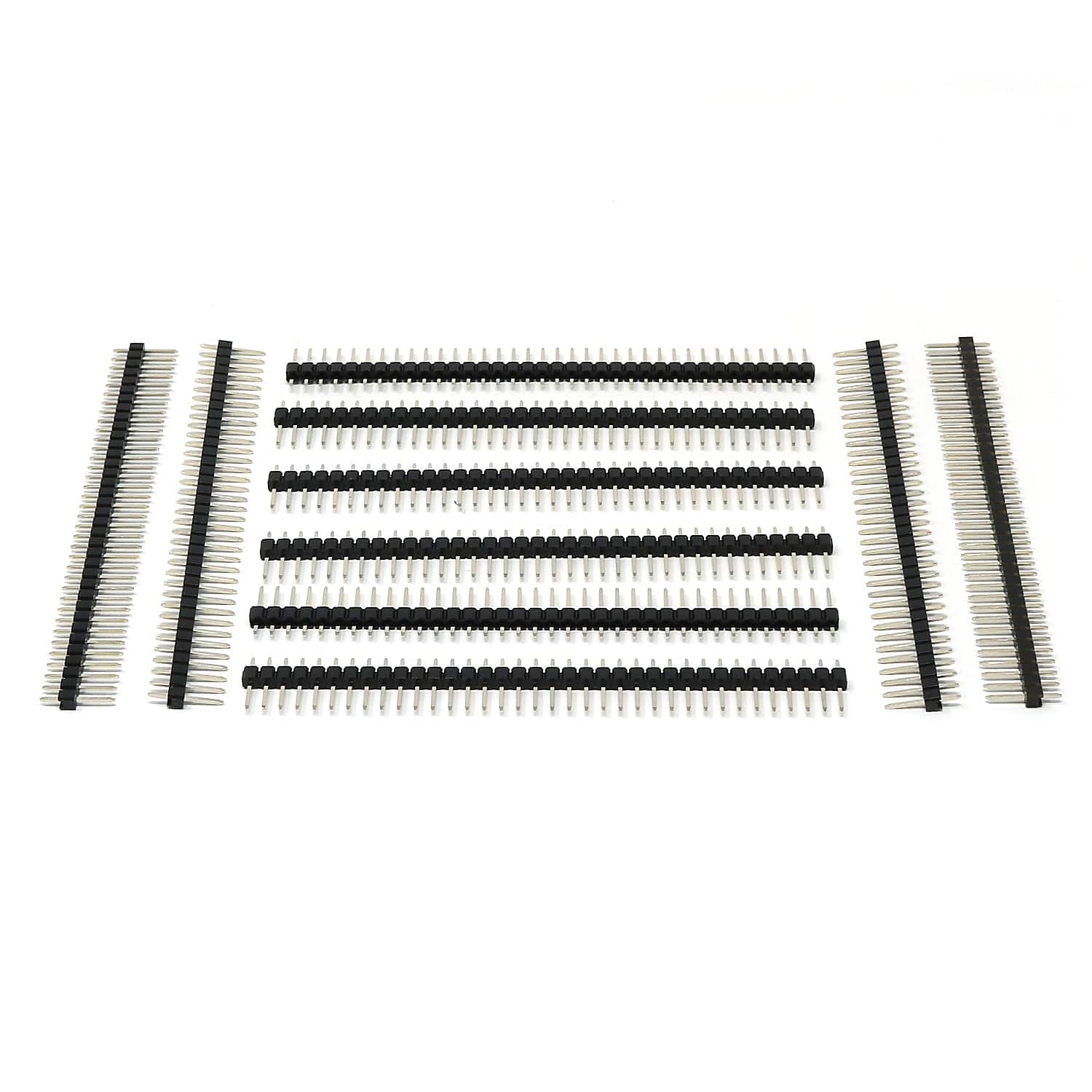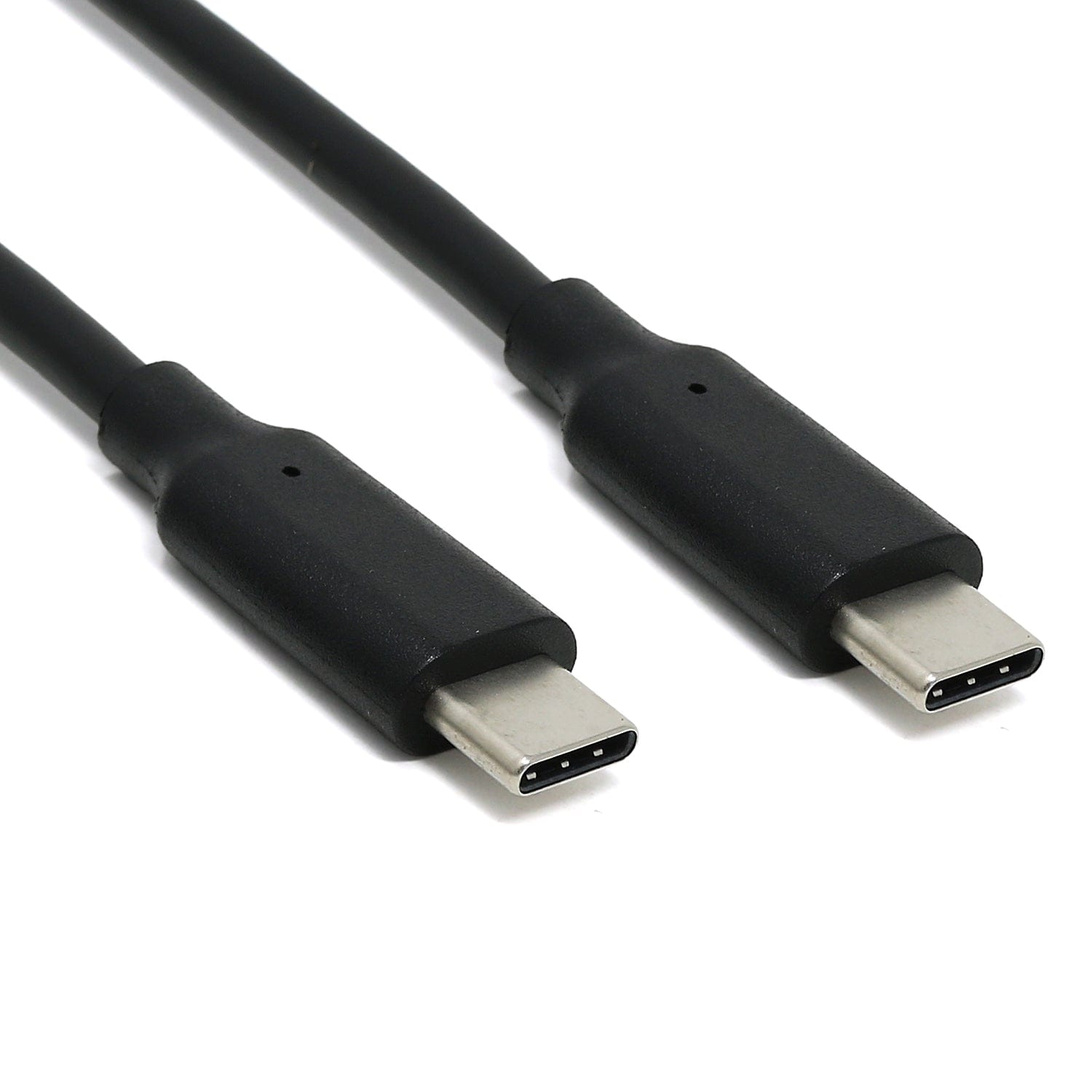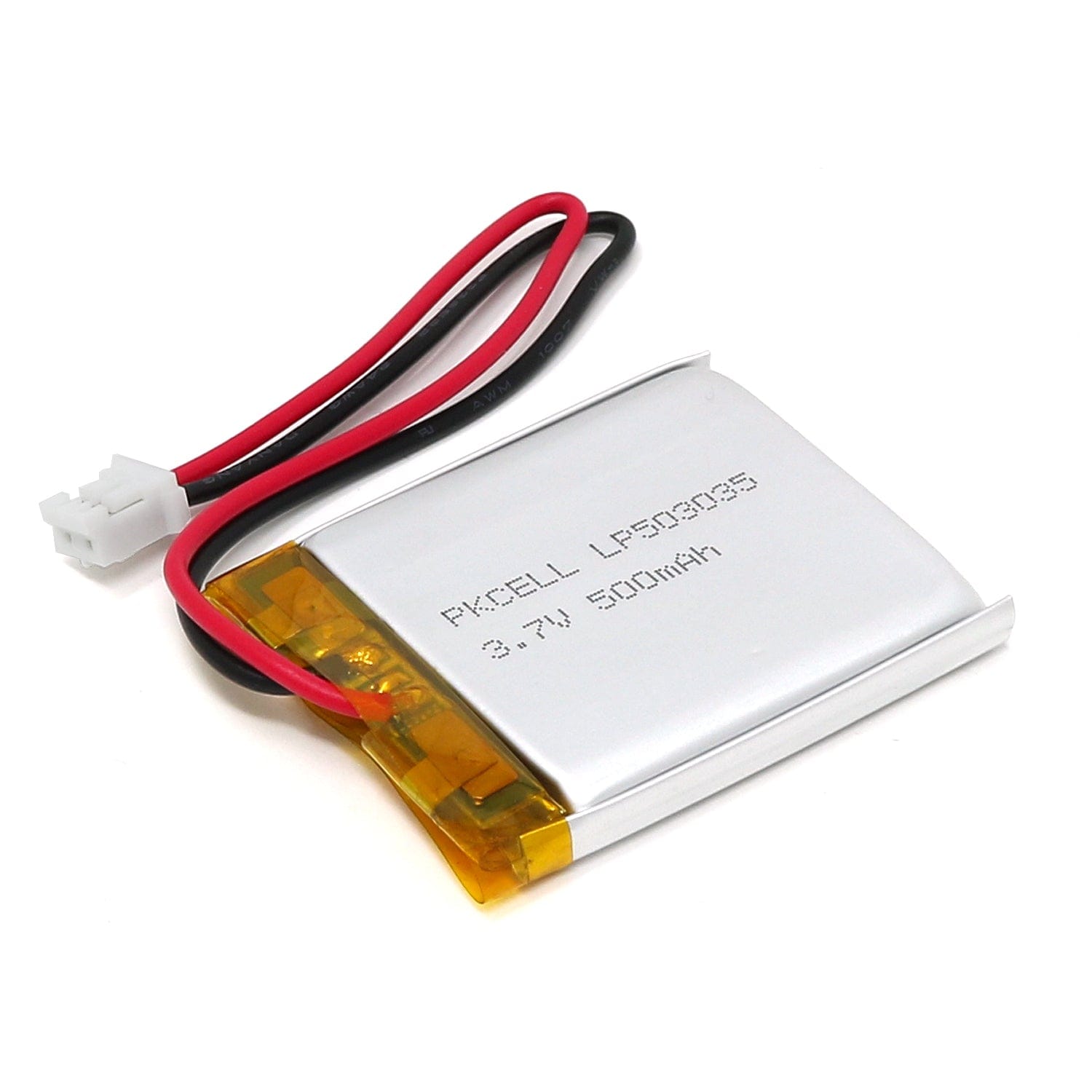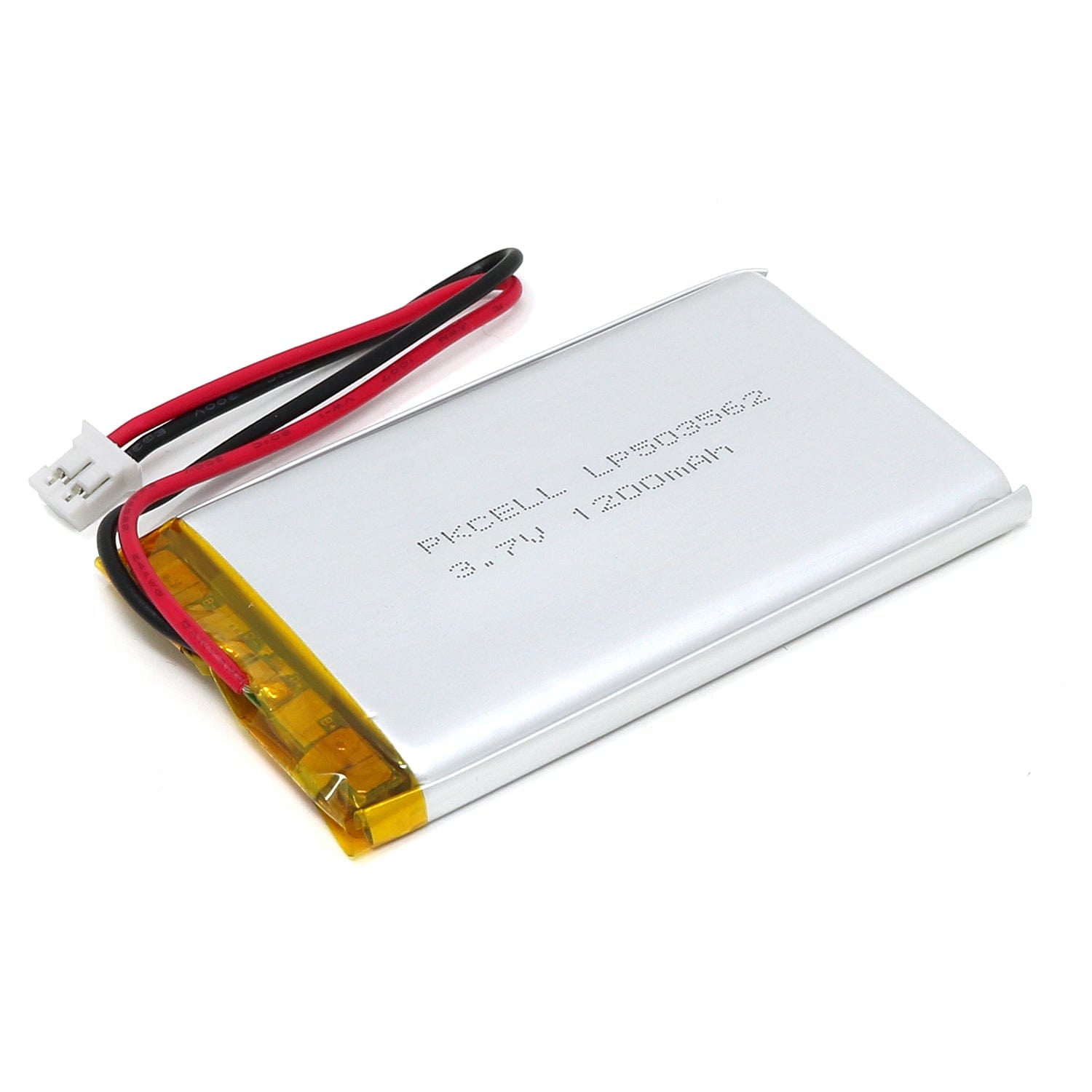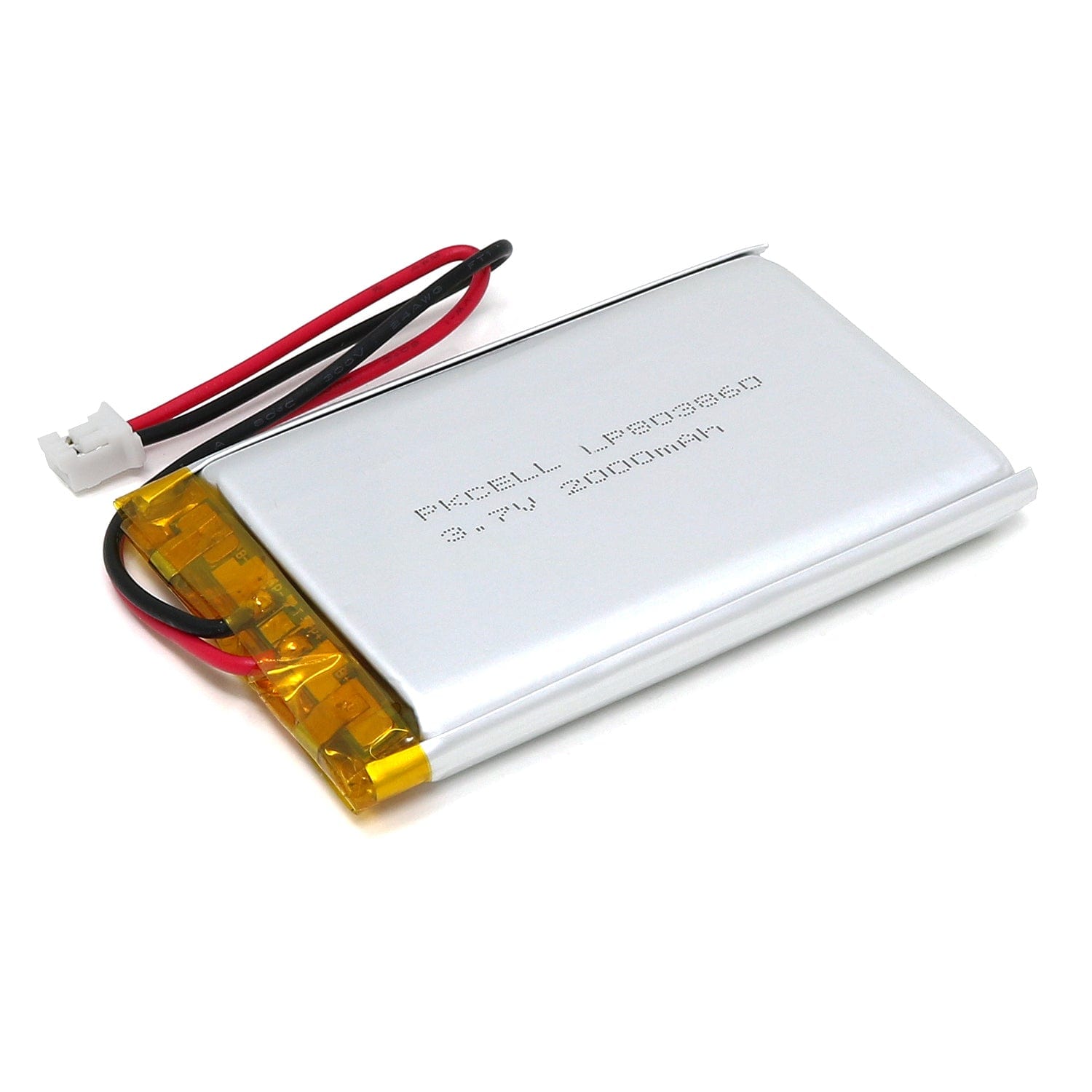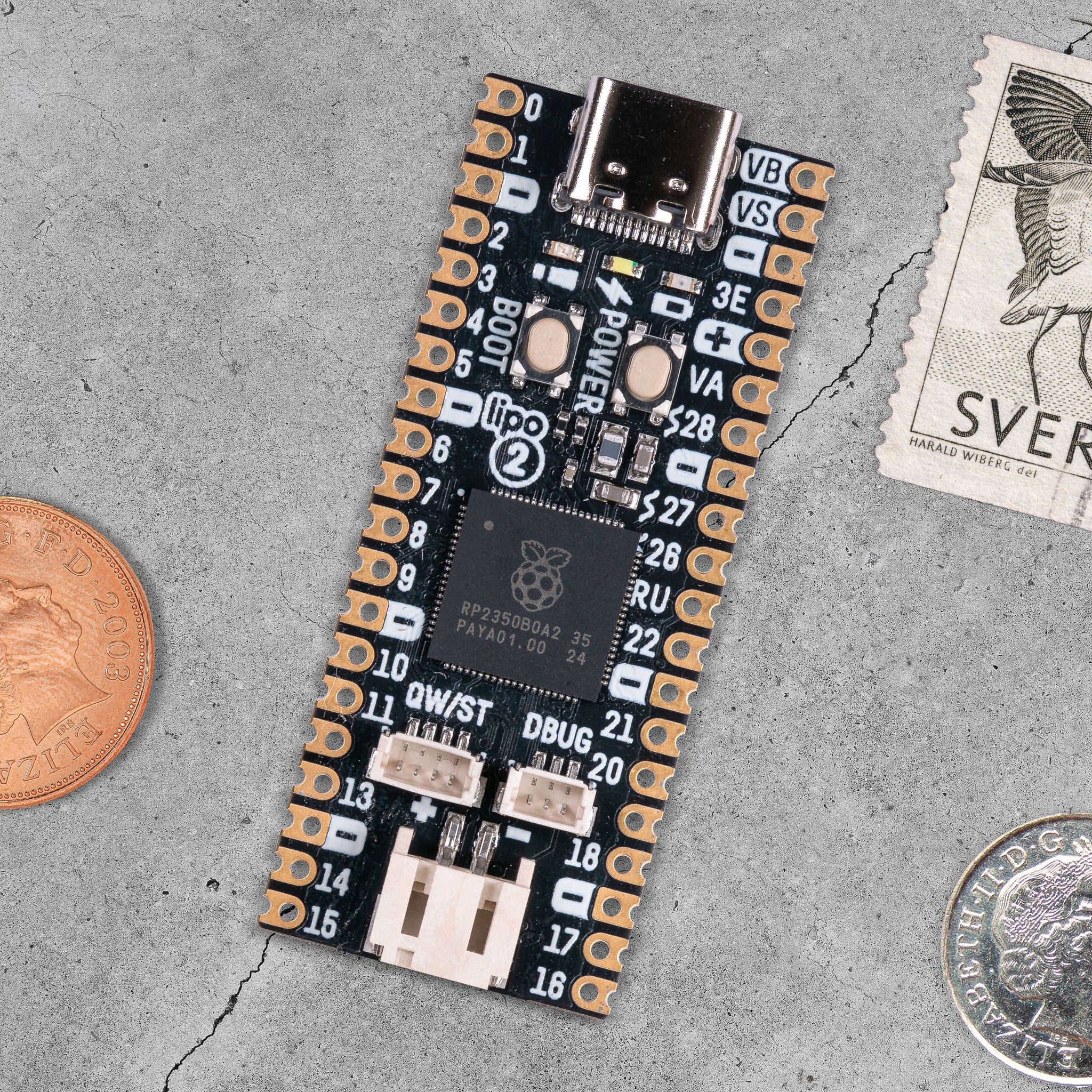
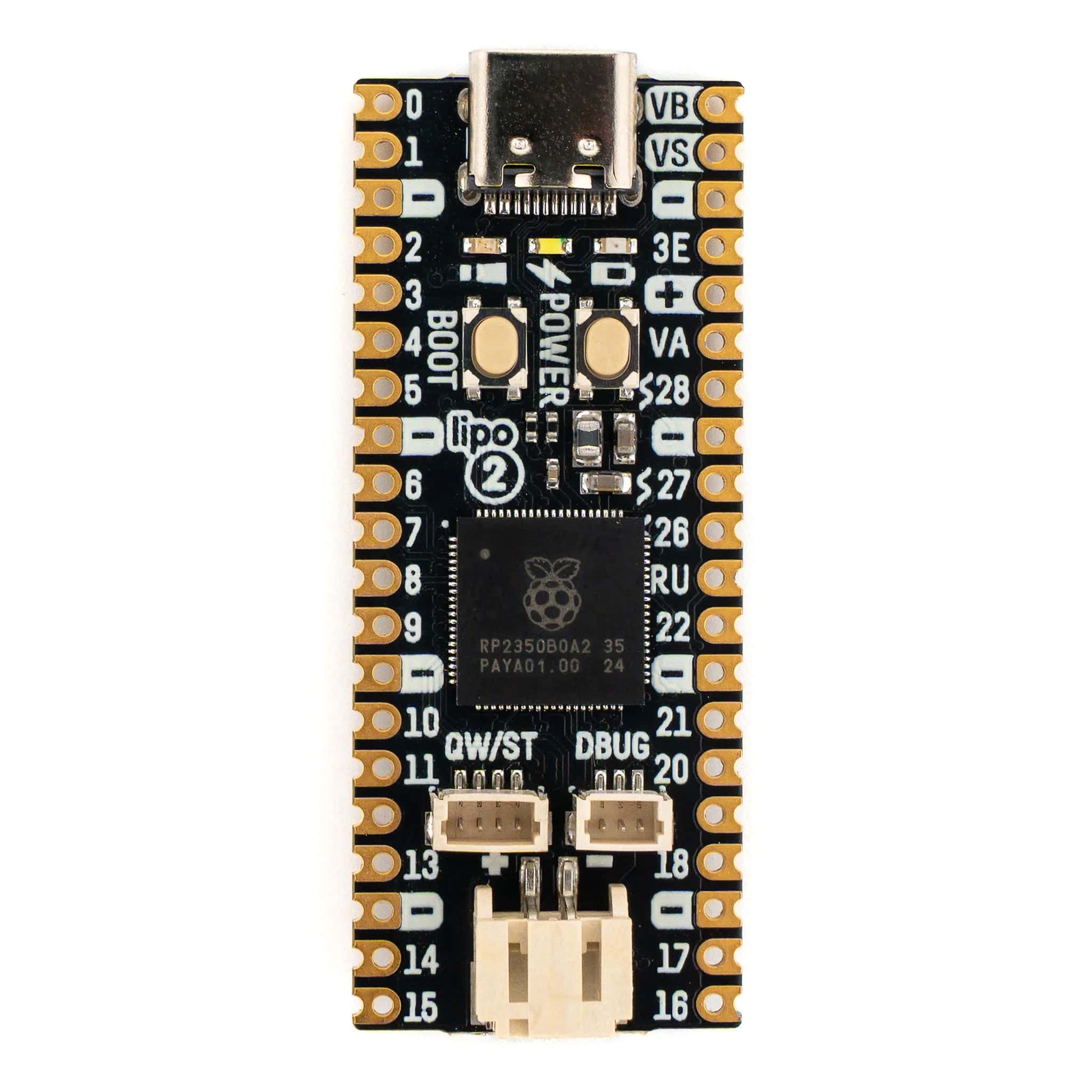
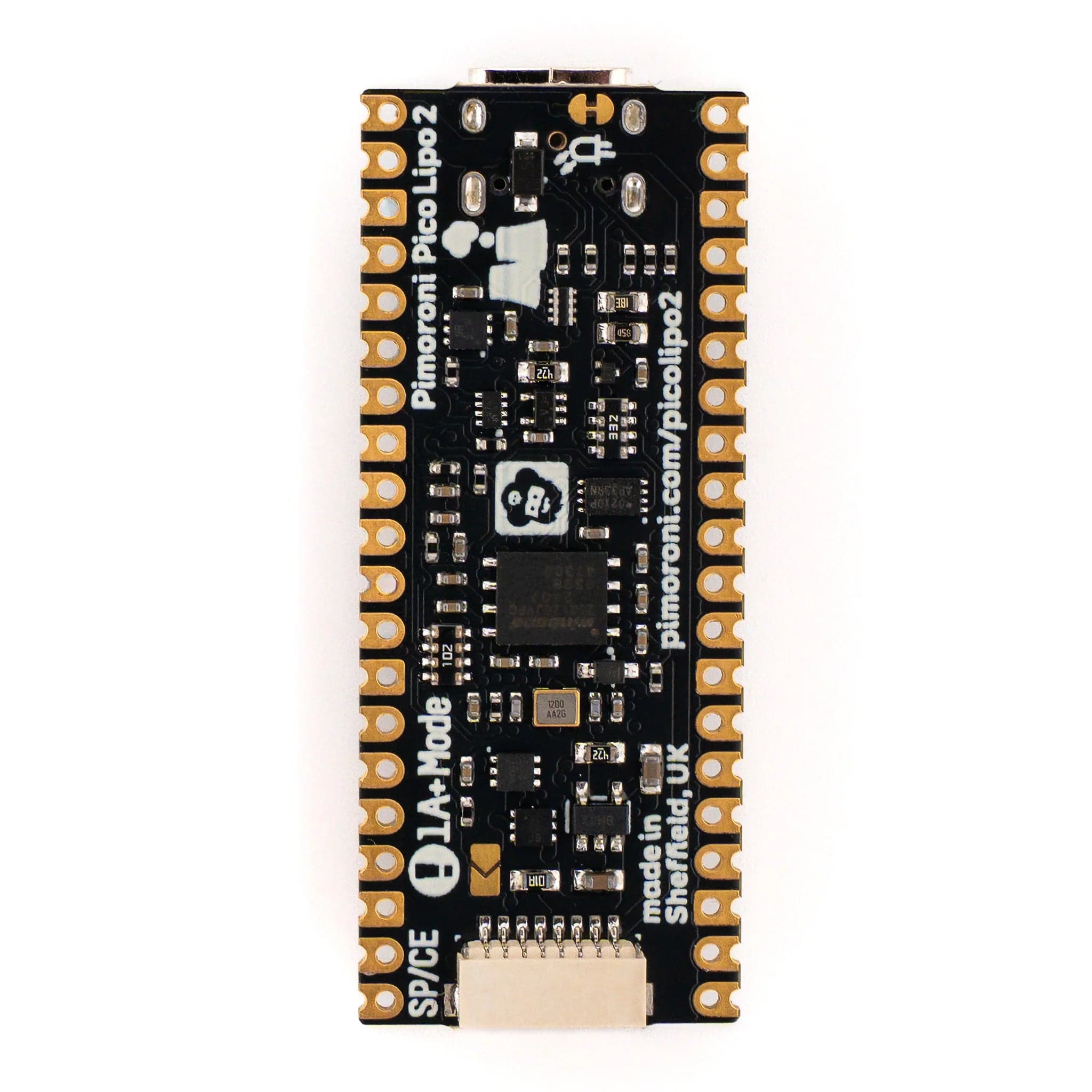
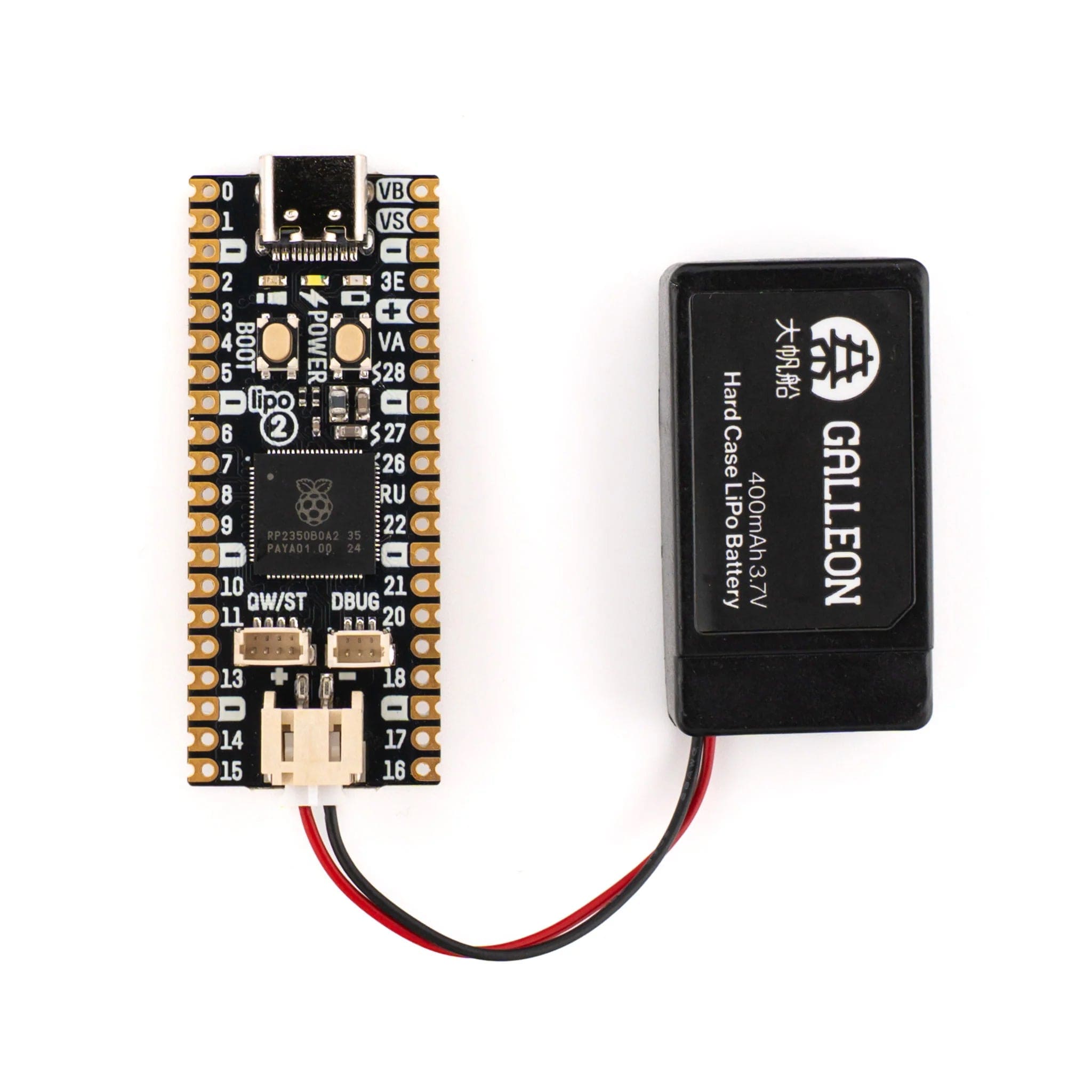
Login / Signup
Cart
Your cart is empty
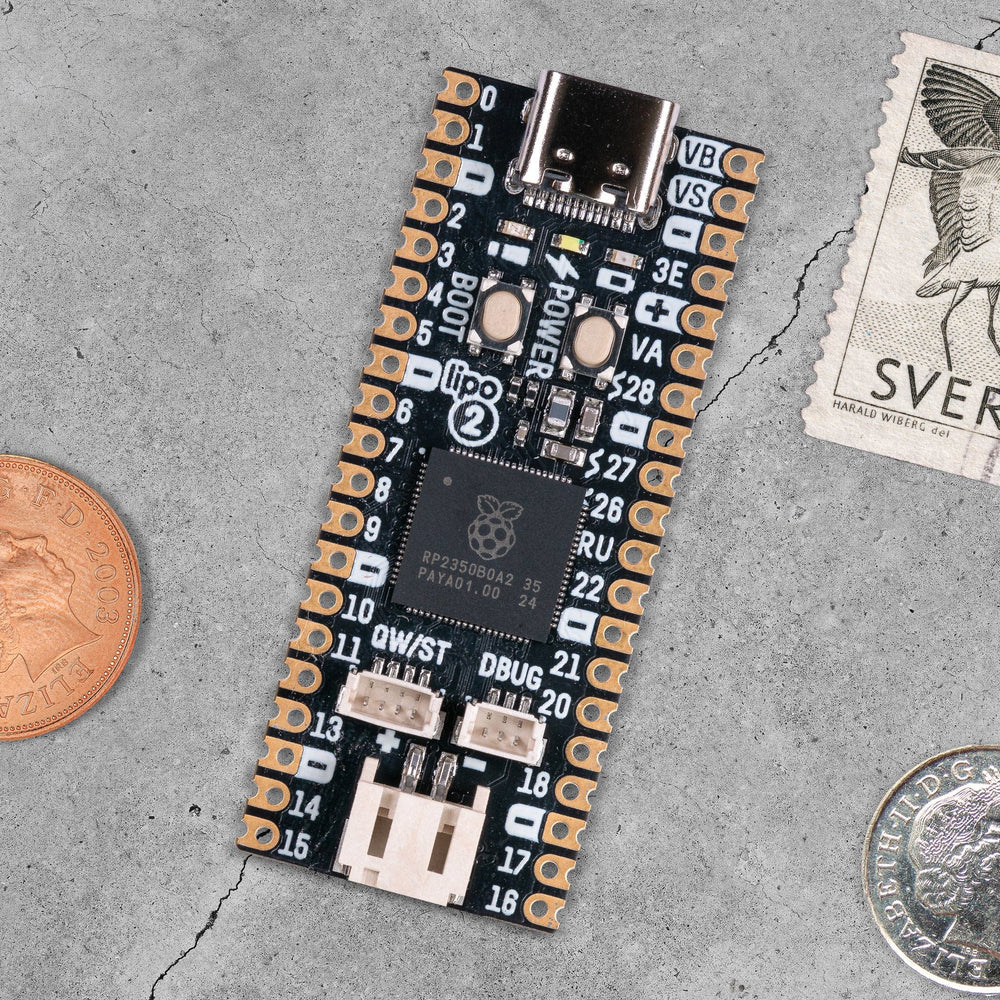
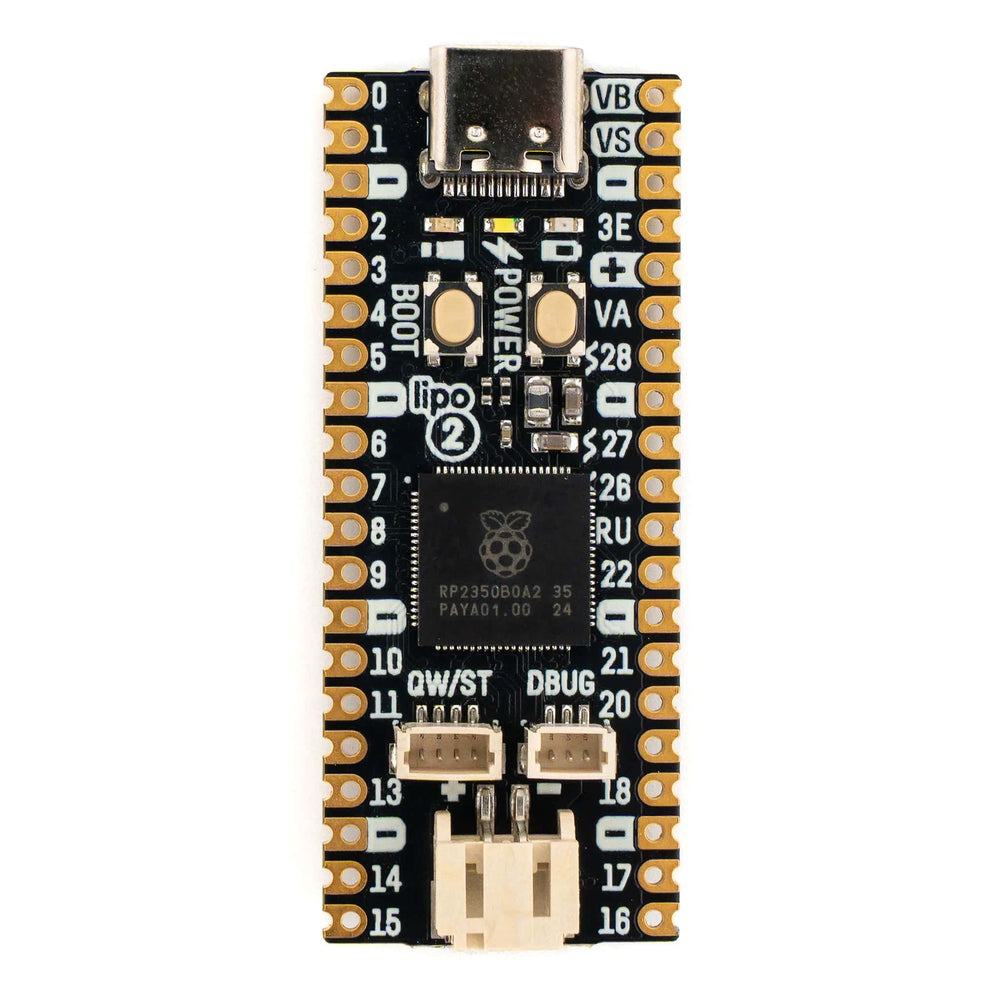
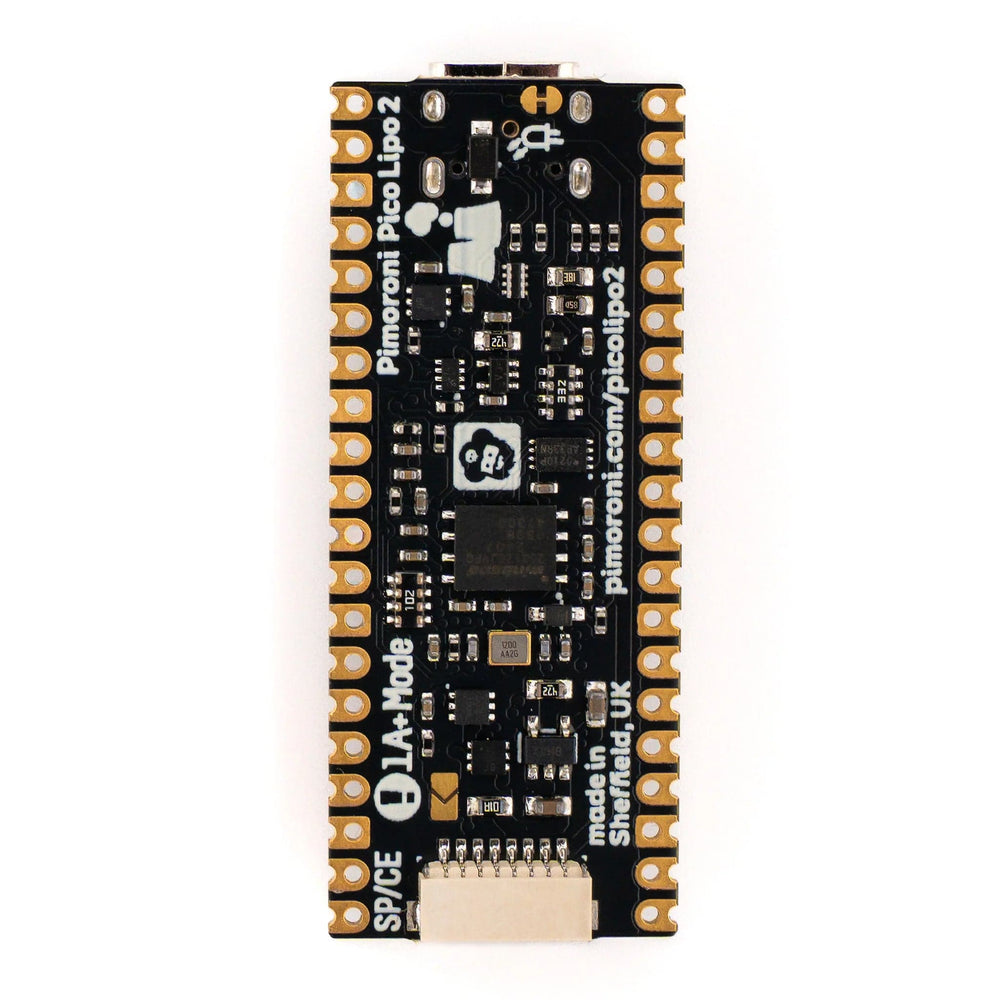
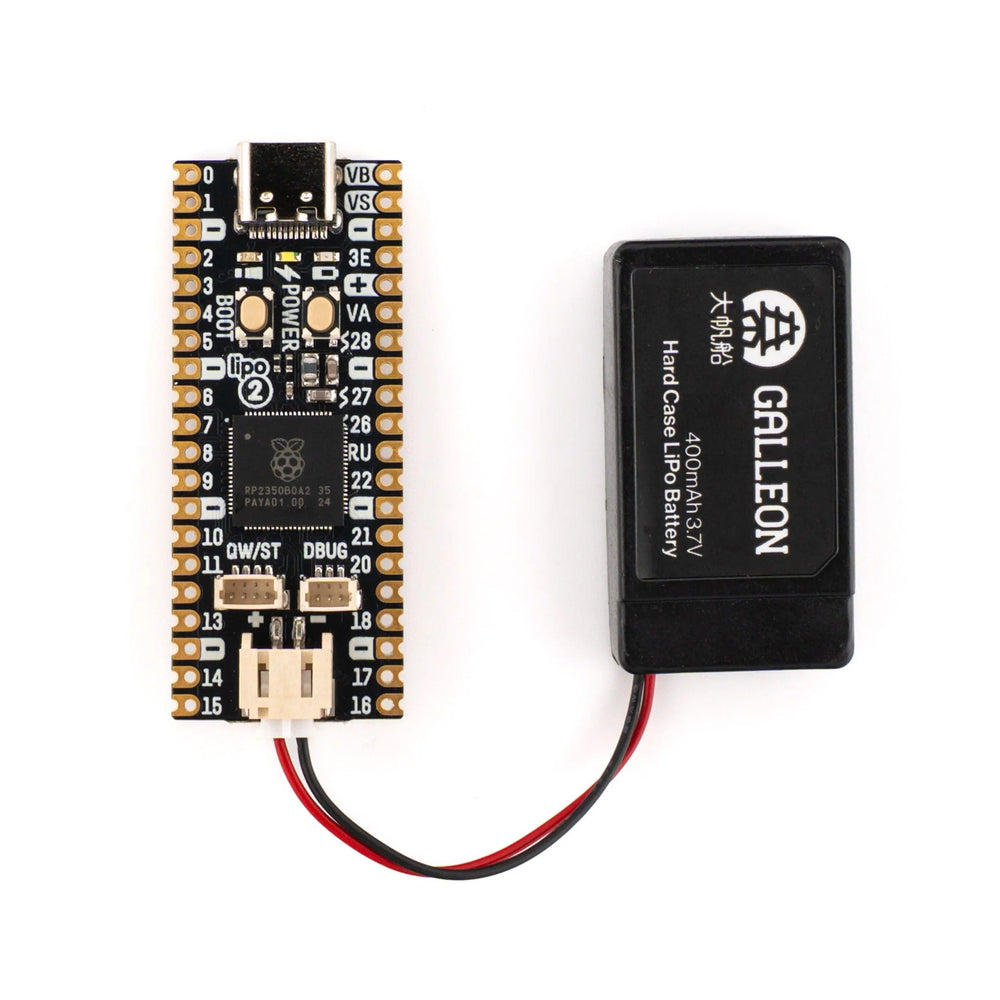
The Pimoroni Pico LiPo 2 is an RP2350-based development board with 8MB RAM, 16MB flash, USB-C, onboard LiPo/LiIon charging, battery status LEDs, power/BOOT buttons, QW/ST and SP/CE connectors, plus debug support for flexible programming.
Psst - looking to use the mighty RP2350 microcontroller as the brains in your project, but want more features than are present on a vanilla Raspberry Pi Pico 2? Pimoroni Pico boards are souped-up dev boards, with all the tasty extras baked in
The Pimoroni Pico LiPo 2 is powered and programmable via USB-C and features an upgraded 8MB RAM, 16MB of flash storage, and easy-to-read pin labels. It's got onboard LiPo/LiIon battery management - the inbuilt charging circuitry means charging your battery is as easy as plugging your board in via USB. There are two indicator LEDs connected to the battery circuit to keep you informed of the on/off state and charging status, and it's compatible with any of our LiPo, LiIon, and high-capacity LiPo batteries. There's also a handy power button and a BOOT button, which can also be used as a user switch.
It's super easy to connect up to things without soldering, with a Qw/ST connector (for adding I2C sensors and breakouts), a SP/CE connector (for hooking up SPI/serial breakouts or for adding a RM2 wireless breakout), and a debug connector (for if you prefer to program using a SWD debugger).
Looking for a similar board with built-in Wi-Fi and Bluetooth connectivity? Check out Pimoroni Pico LiPo 2 XL W!
Batteries, cables, and headers are not included. If you're shopping for long pin headers, please see our headers collection.

If you're new to working with the RP2350 board, we'd recommend starting with our custom MicroPython build, which includes support for our breakouts and Pico add-ons.
The RP2350 chip is the Double Quarter Pounder & Fries to the RP2040's Double Cheeseburger and can have one or more RISC-V burgers instead of either of the M33 ARMs, to stretch the metaphor.
In addition to the modern M33 ARM cores, there are sides of more PIO capability, a variety of low power states for sipping electrons, a whole security system, and some sprinklings of specialist digital video circuits to offload DVI/HDMI output.
You can expect a tasty boost in performance - our "real world" MicroPython tests are running up to 2x faster compared to RP2040, and floating point number crunching in C/C++ is up to 20x faster. The extra on-chip RAM will make a big difference when performing memory-intensive operations (such as working with higher resolution displays), and even more can be added thanks to external PSRAM support.
RP2350 comes in two flavours - A (standard) and B (all the pins). The B chip has a stonking 48 usable GPIO pins, including 8 ADCs and 24 PWMs, and features on some of our new products.
If you're new to working with the RP2350 board, we'd recommend starting with our custom MicroPython build, which includes support for our breakouts and Pico add-ons.





